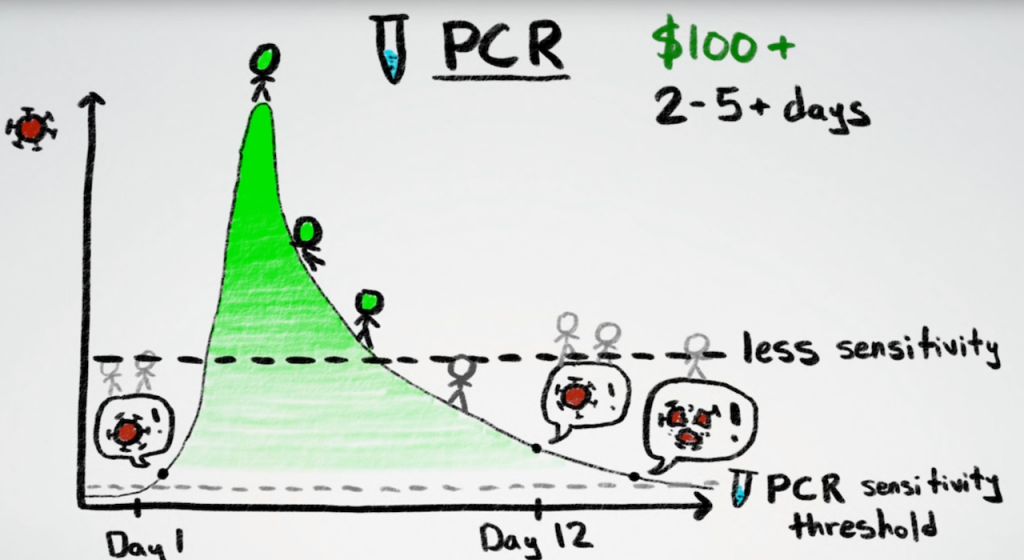
Despite Vaccines, the Need for Rapid COVID-19 Tests Remains
In December 2020, as vaccines for SARS-CoV-2 began rolling out across the country and around the world, the New York Times released a vaccine timeline calculator to help readers determine how long it could be before they could receive their shots.
The New York Times Vaccine Timeline Calculator
Using data from Surgo Foundation and Ariadne Labs, the NYT’s tool calculates the number of people who will need a vaccine in each state and county, and places people in line based on age, profession, and risk factors. Healthcare workers, the elderly, first responders, those with health risks, and essential workers are some of the major groups that will be first in line.
The calculator does not estimate how much time it will take, just your approximate position in line. It is now clear that the vaccine roll-out is moving much slower than expected, and the pandemic is still ongoing throughout the United States. Because of this, many scientists and experts assert that rapid testing remains a critical need.
Rapid, inexpensive antigen tests like ASSURE-19 can detect cases that might otherwise be missed, as traditional PCR tests can be too expensive, too infrequent, or simply not performed for asymptomatic people. Rapid tests would allow infectious people to isolate before they spread the disease to others. Research shows that if used frequently, these tests could significantly drive down infections.
“The Case for LESS Sensitive COVID Tests” from https://www.youtube.com/user/minutephysics. Video written & produced with Aatish Bhatia.
The need for rapid COVID-19 tests will certainly continue throughout 2021, despite the great progress made on vaccines. Shots will reach everyone who wants them, sooner or later, but perhaps not as quickly as we may like. In the meantime, rapid tests could be made available immediately, without a prescription, so we don’t have to wait months for the vaccine to arrive before returning to business as usual.
Because they return results within minutes, rapid tests are ideal for routine public health screening. Here are some other useful links to the latest publications and studies around COVID-19 screening:
- COVID-19 testing: One size does not fit all. https://science.sciencemag.org/content/371/6525/126
- Test sensitivity is secondary to frequency and turnaround time for COVID-19 screening. https://advances.sciencemag.org/content/7/1/eabd5393.abstract
- The effectiveness of population-wide, rapid antigen test based screening in reducing SARS-CoV-2 infection prevalence in Slovakia. (pre-print, not yet peer reviewed) https://www.medrxiv.org/content/10.1101/2020.12.02.20240648v1
- Effective Testing and Screening for Covid-19. https://www.rockefellerfoundation.org/wp-content/uploads/2020/09/A-National-Decision-Point-Effective-Testing-Screening-for-Covid-19-Full-Report.pdf
- Brown University & Harvard University modeling of COVID-19 testing shortfall. https://globalepidemics.org/testing-targets/
- Asymptomatic Spread: People without symptoms spread virus in more than half of cases, CDC model finds https://www.washingtonpost.com/science/2021/01/07/covid-asymptomatic-spread/
- (More than half of all) SARS-CoV-2 Transmission from People Without COVID-19 Symptoms. https://jamanetwork.com/journals/jamanetworkopen/fullarticle/2774707
- Three Quarters of People with SARS-CoV-2 Infection are Asymptomatic: Analysis of English Household Survey Data. https://www.ncbi.nlm.nih.gov/pmc/articles/PMC7549754/
- Viral Load Curve: SARS-CoV-2 viral dynamics in acute infections. (pre-print, not yet peer reviewed) https://www.medrxiv.org/content/10.1101/2020.10.21.20217042v2